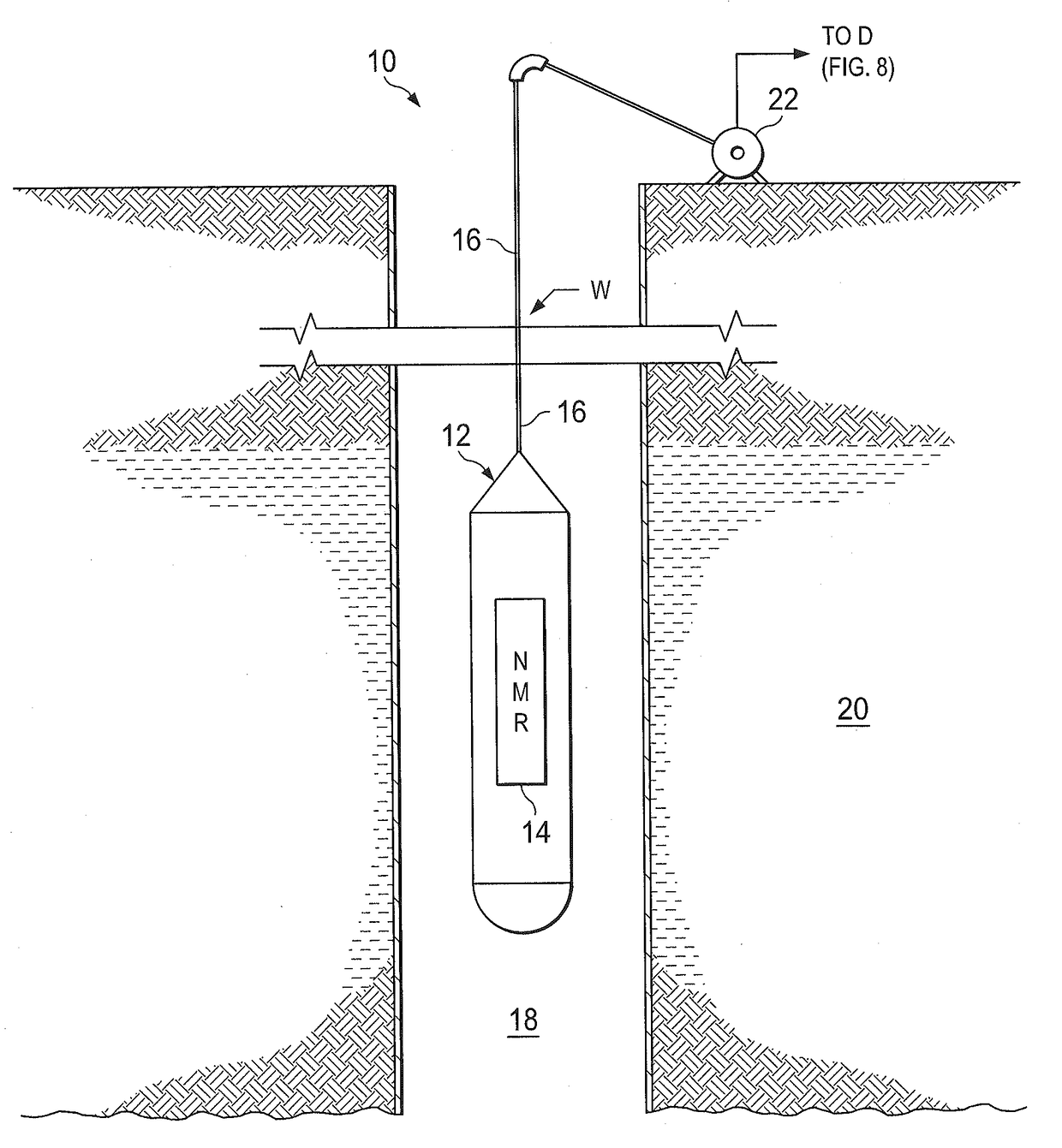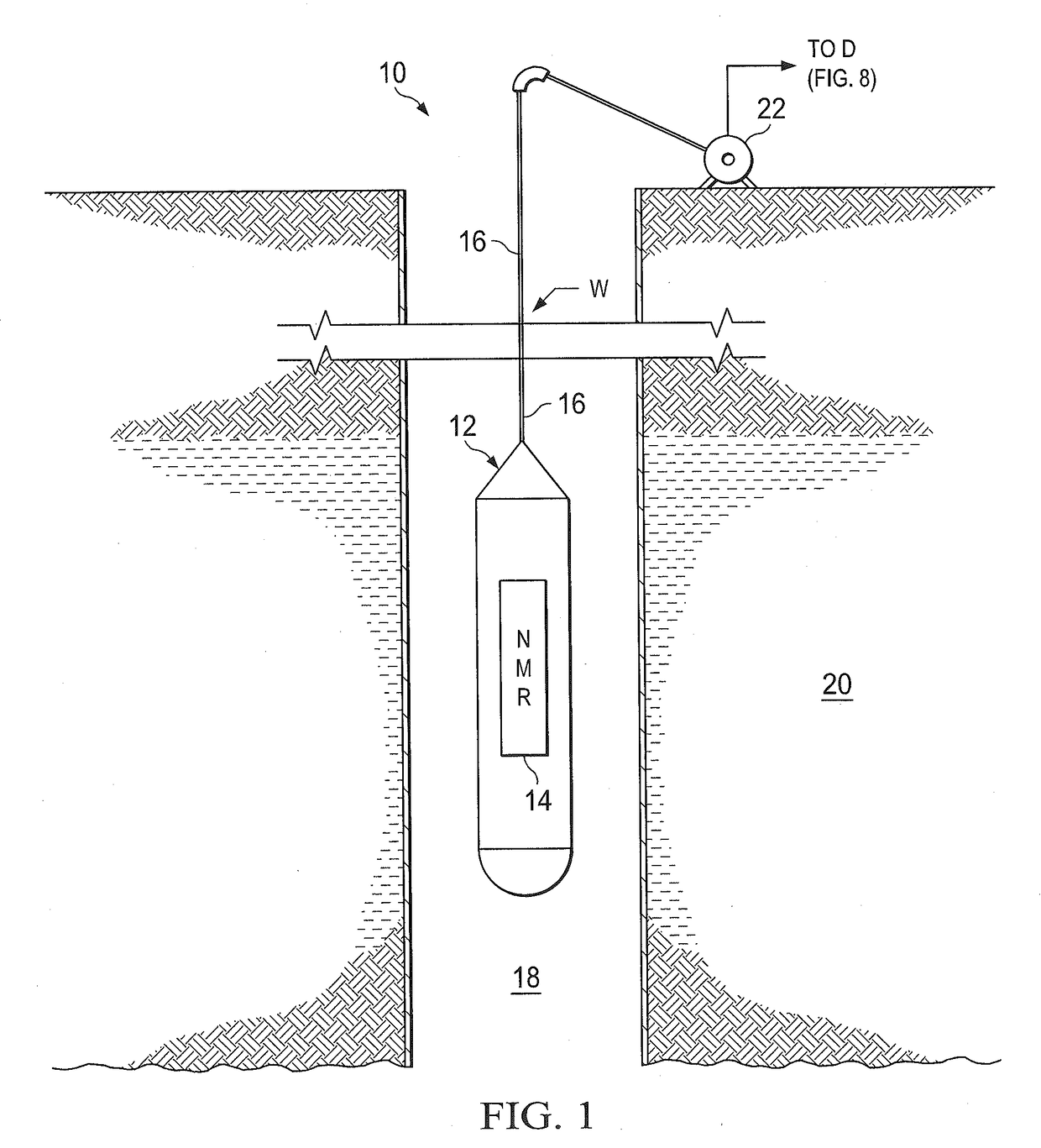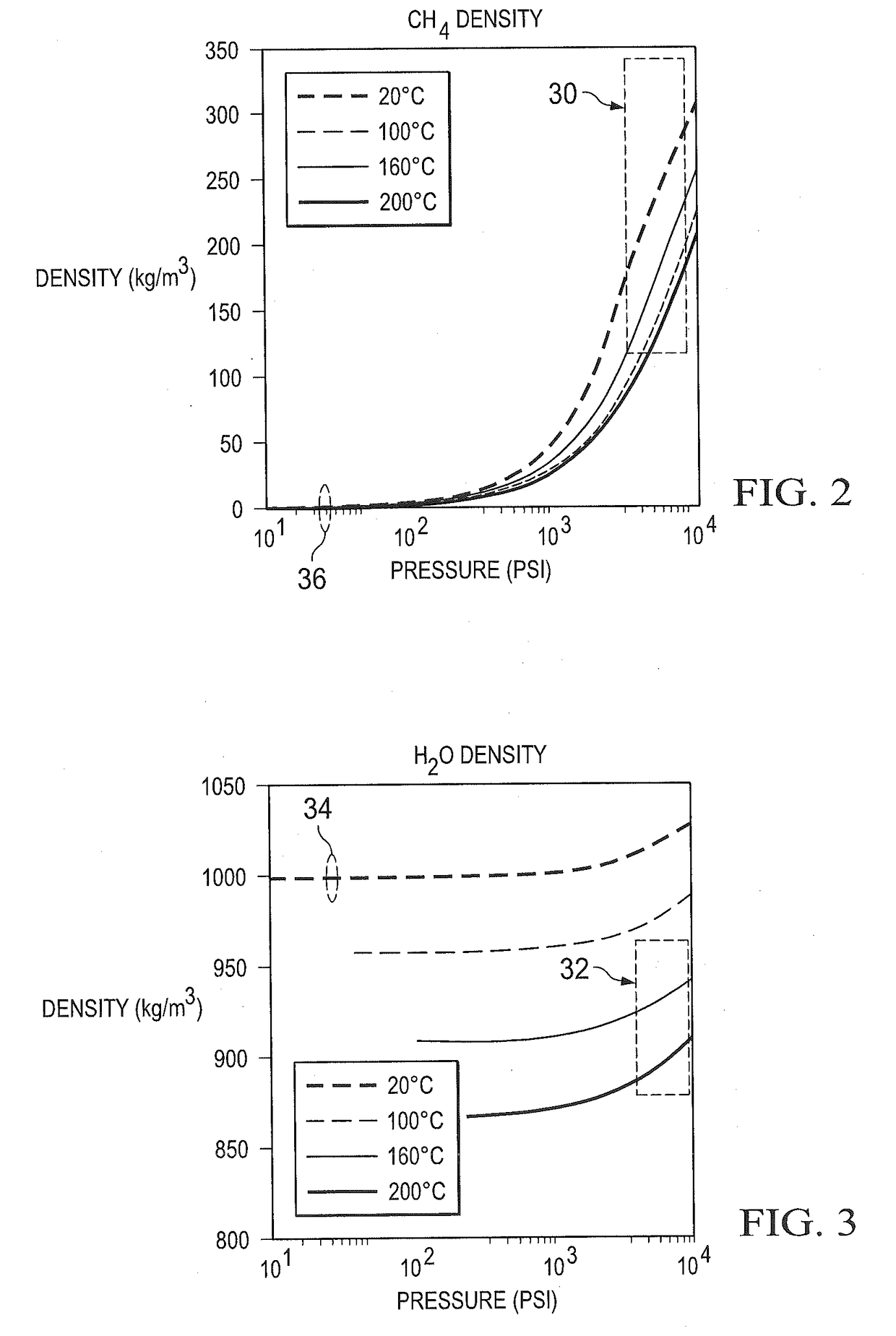Method for measurement of hydrocarbon content of tight gas reservoirs
a hydrocarbon content and reservoir technology, applied in the field of subsurface hydrocarbon reservoir evaluation, can solve the problems of inability to accurately estimate the hydrocarbon content of tight reservoirs, inability to obtain cores with core sampling tools at depths of interest in formations, and high cost of core acquisition and sampling,
- Summary
- Abstract
- Description
- Claims
- Application Information
AI Technical Summary
Benefits of technology
Problems solved by technology
Method used
Image
Examples
Embodiment Construction
[0023]In the drawings, a conventional well logging system W is shown in FIG. 1 at a well 10. A sonde 12 containing a nuclear magnetic resonance or NMR well logging system 14 with conventional processing and surface communication instrumentation is lowered by a conductive wireline cable 16 into a well bore 18 to obtain the responses of subsurface formations 20 at depths of interest. In the context of the present invention, the formations of interest are tight gas reservoirs in formations containing methane and other hydrocarbon gases. According to the present invention, tight gas reservoirs include shales, tight siliciclastic sands and tight carbonates.
[0024]NMR logging measures the induced magnetization of hydrogen nuclei (protons) contained within the fluid-filled pore space of porous media (reservoir rocks). Low frequency (in a spectrum from about a few hundred kHz to about a few mHz) NMR-logging measurements respond to the presence of mobile hydrogen protons, rather than measurin...
PUM
 Login to View More
Login to View More Abstract
Description
Claims
Application Information
 Login to View More
Login to View More - R&D
- Intellectual Property
- Life Sciences
- Materials
- Tech Scout
- Unparalleled Data Quality
- Higher Quality Content
- 60% Fewer Hallucinations
Browse by: Latest US Patents, China's latest patents, Technical Efficacy Thesaurus, Application Domain, Technology Topic, Popular Technical Reports.
© 2025 PatSnap. All rights reserved.Legal|Privacy policy|Modern Slavery Act Transparency Statement|Sitemap|About US| Contact US: help@patsnap.com



